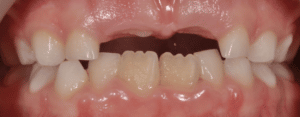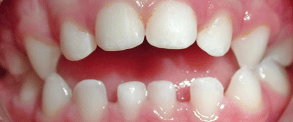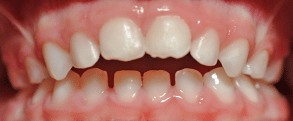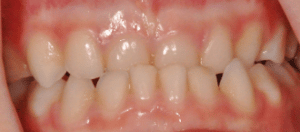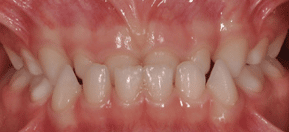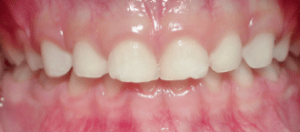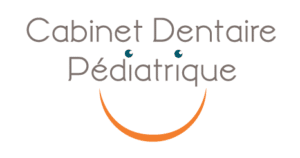Orthodontics is used to correct dental anomalies, such as a bad position of the teeth or jaw. The orthodontic treatments are very frequent in children and when performed on a child between the ages of 6 and 9, it is called interceptive orthodontics. This type of preventive treatment helps prevent the appearance or aggravation of dental problems.
What is interceptive orthodontics?
Interceptive orthodontics is an orthodontic treatment performed on young children between the ages of 6 and 9. This type of treatment helps to prevent the development of dental complications. Used at an early age, this treatment corrects the position of the teeth and jaw.
Dental interceptive treatment is the first level of orthodontic correction. Most of the time, it consists of correcting a misalignment of the upper and lower jaws. It is also possible to modify a bad position of the teeth.
Remember to correct the oral breathing problems of your child's teeth before orthodontic treatment to avoid any complications.
The benefits of using interceptive orthodontics
Interceptive orthodontics has many benefits for the oral health and general well-being of young children.
This preliminary treatment allows:
- Improve certain speech problems
- To improve the aesthetics, the smile and the self-confidence of the child
- Reduce the risk of trauma in case of a fall
- To reduce the risk of impacted teeth
- To promote the proper development of permanent teeth
- To simplify future orthodontic care
- To promote the proper development of the jaws
What problems are treated by dental interception?
Interceptive orthodontics is mainly used to treat problems with the position of the upper and lower jaws. A misalignment of the mandible can have serious consequences on the development of permanent teeth.
Through interceptive treatment, various problems can be solved.
The gap in the tooth
A gap in the teeth, also called an underbite, is an abnormality in the configuration of the teeth. A child with a gap has upper and lower teeth that do not touch when the mouth is closed.
This anomaly can affect the front teeth (incisors and canines), the back teeth (molars) or all the teeth.
The main causes of a gap in the teeth of young children are thumb sucking or a low position of the tongue that hinders the development of the teeth.
The consequences without proper orthodontic treatment are numerous:
- An unattractive smile with misaligned teeth,
- Speech problems,
- Problems during chewing.
Overlapping
Overbite is another relatively common dental anomaly in young children. A child with overbite has upper canines and incisors that obscure the lower teeth.
The main causes of this malformation of the teeth are thumb sucking, a bad fall, a too narrow mouth or a difference in size between the jaws.
Overbite can have negative consequences for the child's oral health:
- Premature wear of the incisors,
- Injuries and pain in the palate,
- Jaw pain during chewing.
Retrusion of the upper jaw
Retrusion of the maxilla is a dental anomaly that is characterized by an upper jaw that is shifted or smaller than the lower jaw.
The main causes of an upper jaw retrogression are heredity or bad habits such as thumb sucking during growth.
A child with an upper jaw shift is at risk for early tooth damage, chewing difficulties and speech problems.
In addition, the shift of the jaw also impacts the patient's aesthetics.
The anterior cruciate joint
Anterior crossbite is diagnosed when an upper incisor erupts behind a lower incisor.
This is detrimental to the development of the other teeth and jaws. The upper jaw tends to develop less forward, while the lower jaw develops too far forward.
This creates a poor jaw position that results in patient discomfort during chewing and premature wear of the incisors.
It is very important for your children to undergo interceptive orthodontic treatment if they need it.
Only these treatments have a cost: find out what these orthodontic fees are for your child. You should know that there are possible reimbursements to help your child regain a flawless smile through orthodontics.
The different types of interceptive braces
The appliances used for interceptive orthodontics can be fixed or removable.
Fixed appliances
Fixed devices are worn by patients at all times.
The circuit breaker
The breaker is a fixed appliance, bonded to the permanent molars and in contact with the palate, which is designed to widen the upper jaw and the palate. This creates more space for the teeth to grow properly.
The circuit breaker must be activated daily by the patient. The patient must insert a key into the device and turn it to enlarge the device day by day. The device grows about 0.25 millimeters with each turn of the key.
At the end of the treatment, the breaker allows the palate to be enlarged by about one centimeter.
The Helix Quad
The Quad Helix is a fixed dental appliance that is bonded to the maxillary molars with bands that completely surround the teeth. The two bands are connected by an arc that passes through the palate.
This appliance widens the upper jaw to create space for the teeth to grow in properly.
Unlike the circuit breaker, the Quad Helix does not have to be activated by the patient on a daily basis. It is adjusted by the orthodontist approximately every two months until the desired result is achieved.
The arch of Nance
The Nance archwire is an appliance that consists of two bands that are attached around the upper permanent molars. A wire located near the palate connects these two bands with a resin pad at the back of the incisors.
This fixed appliance is used to block certain dental movements during growth. The Nance Arch is also used to maintain space and block the position of molars in cases of early loss of deciduous teeth.
Removable devices
Removable appliances must be worn at all times, except during meals and certain sports activities.
The palatal plate
The palatal plate, also known as a false palate, is a removable dental appliance that widens the upper jaw and/or realigns the front teeth. It is one of the most popular appliances for young children because of its affordability and non-invasive use.
The palatal plate consists of a plate located at the level of the palate which is maintained by small hooks and springs fixed on the child's teeth. The assembly exerts a pressure on the jaw that is imperceptible to the child.
The appliance is removable but must be worn by the child at all times, except during meals and sports activities. The adjustment of the appliance is done by the orthodontist every three to four weeks.
At what age can children start interceptive therapy?
Early orthodontic treatment can be performed for children as young as 6 years old.
From 6 to 9 years old dental interception treatments can be prescribed to change the position of the jaw, as children are still growing and the results will be faster and less painful.
Should I wear braces after interceptive orthodontics?
Interceptive and preventive orthodontics can reduce the appearance of dental anomalies. It is recommended during a visit to a specialized dentist.
Taking care of dental alignment in childhood can reduce malocclusions, which are more complicated to treat in adolescence.
Once the treatment is completed, the child will not necessarily have to wear braces. However, some dental anomalies are easier to correct in adolescence, especially with braces. Regular follow-up is therefore necessary.







